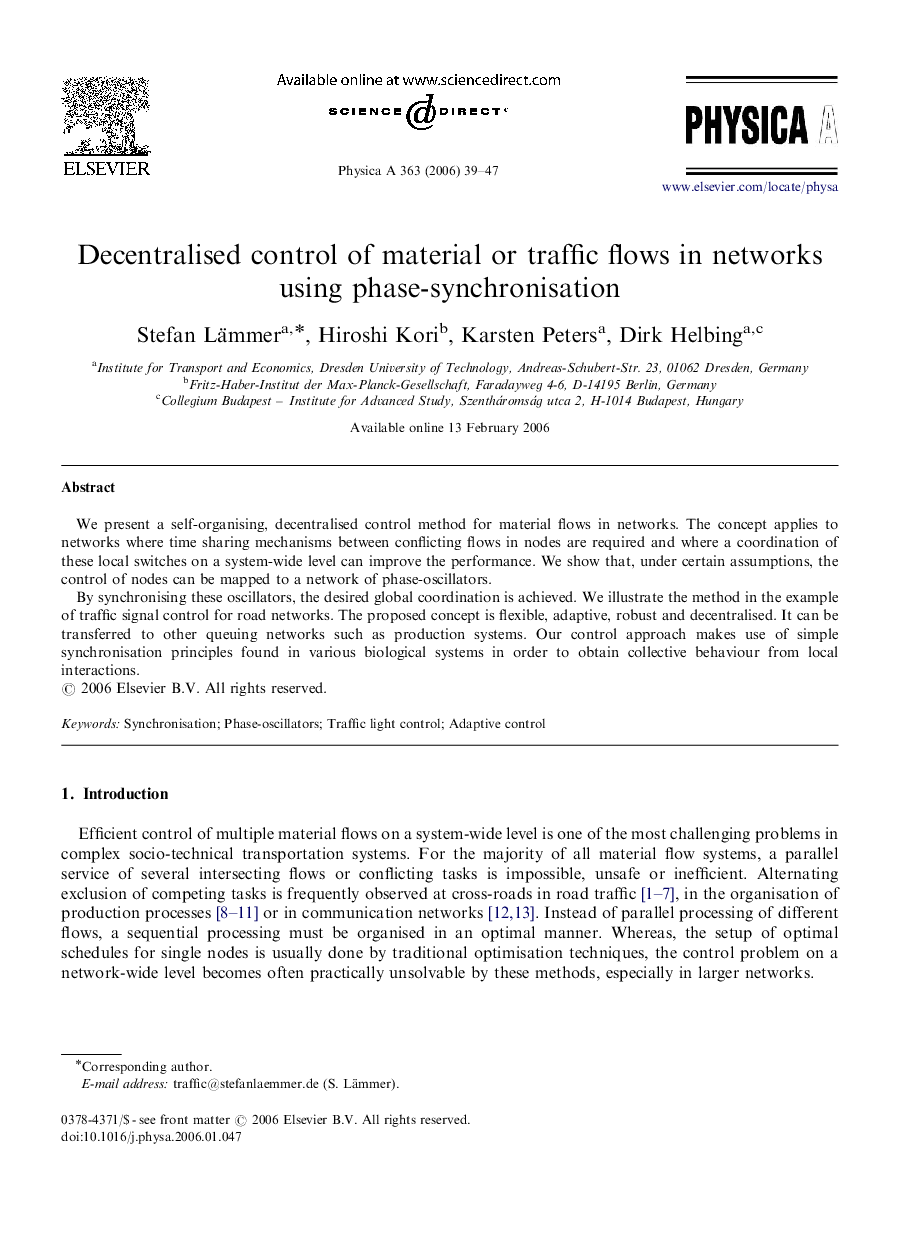| Article ID | Journal | Published Year | Pages | File Type |
|---|---|---|---|---|
| 979289 | Physica A: Statistical Mechanics and its Applications | 2006 | 9 Pages |
Abstract
By synchronising these oscillators, the desired global coordination is achieved. We illustrate the method in the example of traffic signal control for road networks. The proposed concept is flexible, adaptive, robust and decentralised. It can be transferred to other queuing networks such as production systems. Our control approach makes use of simple synchronisation principles found in various biological systems in order to obtain collective behaviour from local interactions.
Related Topics
Physical Sciences and Engineering
Mathematics
Mathematical Physics
Authors
Stefan Lämmer, Hiroshi Kori, Karsten Peters, Dirk Helbing,
